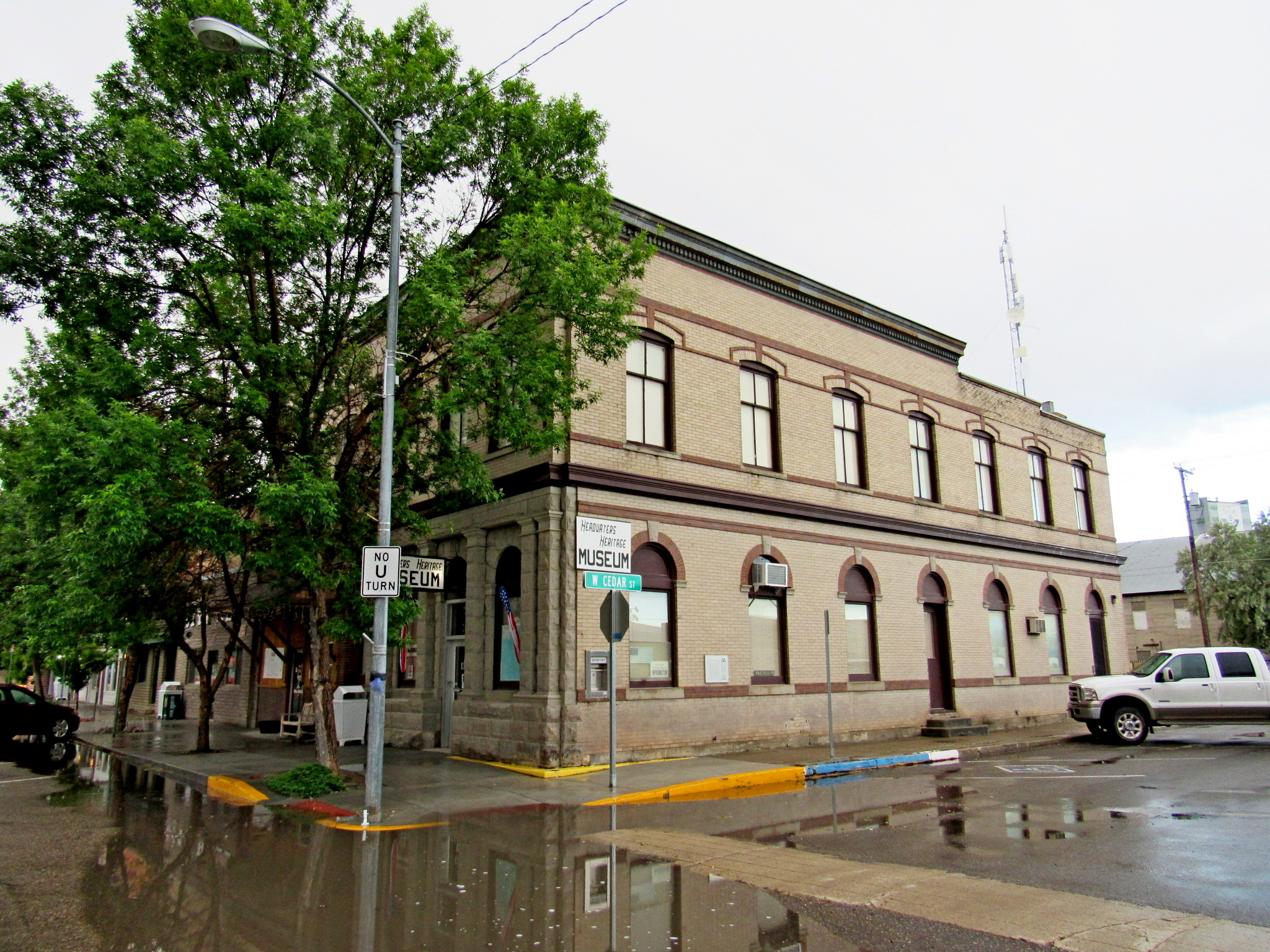|
 Headwaters Heritage Museum - Three Forks, MT Posted by:  T0SHEA T0SHEA
N 45° 53.581 W 111° 33.156
12T E 457128 N 5082309
Though twice a bank, that didn't take and today this substantial brick and stone building houses the Headwaters Heritage Museum.
Waymark Code: WM109VA
Location: Montana, United States
Date Posted: 03/28/2019
Views: 2
A haunted bank - we can think of a few possibilities here - a disgruntled depositor who lost it all during a financial panic and came back after death to even the score - a dishonest cashier who absconded with bank funds and was caught, his penance being to haunt the bank forever - a foiled bank robber, determined to make the bank sorry for not having turned over the cash...
In any event, someone seems to be haunting the bank, someone who definitely wished to make their presence known, too.
Headwaters Heritage Museum
This 1910 bank building was converted to a heritage museum, but an evil entity is still believed to linger in the building. Several visitors have reported being pushed by an unseen presence, as well as feeling cold spots and hearing disembodied footsteps.
From Haunted Places
Three Valleys State Bank opened in Three Forks in 1910, just two years after the town was platted. The majority of its clients were homesteaders scratching out a living in the surrounding countryside, which, for the bank, would not be a good thing. Drought hit Montana in 1917 and lasted for several years, forcing many farmers off their land. Eventually, the banks which held the mortgages on these farms would fail, as well. In fact, over half of Montana's banks would disappear as a result of the protracted drought, this one included. After several changes in ownership the bank was, at that time, American National Bank.
A bank again in 1960, it, too is now gone and the old bank is now home to the Headwaters Heritage Museum, open June 1 through September 30 (and by appointment in the off season). While the museum has been open since 1982, we can't state with certainty that it has been in this building for all of those thirty years.
The Three Forks Area Historical Society opened the museum in July of 1982, and it contains a vast and fascinating array of artefacts from the Missouri River Headwaters area. To list just the highlights...an anvil found at the headwaters (possibly the oldest American-made anvil in existence), Montana's largest brown trout caught in 1966 and weighing in at 29.5 pounds, an extensive barb wire collection, a dugout canoe used in a Lewis and Clark TV documentary, and a log cabin from Gallatin City (first county seat) built in the 1860s.
Upstairs is a nostalgic journey to the past with an old fashioned kitchen, school room, dress and millinery shop, beauty shop, tool room, and dental office. Three Forks was founded in 1908 by the Milwaukee Railroad, and there is a station agent's office filled with memorabilia. A military room is dedicated to those of this area who served our nation.
An extensive collection of obituaries, photo archives, and a newspaper microfilm library of the earliest issues of the Three Forks Herald, as well as the highly inflammatory Pink Reporter, published between 1938 and 1942, are available.
Our gift shop offers souvenirs, gifts, post cards, and a wide assortment of books about the Lewis and Clark expedition, the fur trapping era, Native American topics, railroad, and local history.
From Visit Montana
Following is a bit of a walk through of the museum, from the NRHP data sheet, allowing one to get a feel for the museum and its setup.

Public access?:
Yes

Visting hours:
Monday - Saturday: 9:00am - 5:00pm Sunday: 11:00am - 3:00pm

Website about the location and/or story: [Web Link]

|
Visit Instructions:
Please submit a photo(s) taken by you of your visit to the location (non-copyrighted photos only). GPS photos are also accepted with the location in the background, and old vacation photos are accepted. Photos you took of paranormal activity are great. If you are not able to provide a photo, then please describe your visit or give a story about the visit
Tell your story if you saw, felt, or smelled anything unusual. Post pictures of what you saw.
Add any information you may have about the location. If your information is important about the location, please contact the waymark owner to see if it can be added to the description.
Be careful and do not enter areas which are off limits or look dangerous. No waymark is worth harm. Use your 6th sense, because sometimes there are unseen things which are telling you to stay out.
Use care when using your camera flash so you do not disrupt any possible nearby residents. Time lapse can be the best tool on your camera in many circumstances.
Recent Visits/Logs:
| There are no logs for this waymark yet. |
|
|
|
|